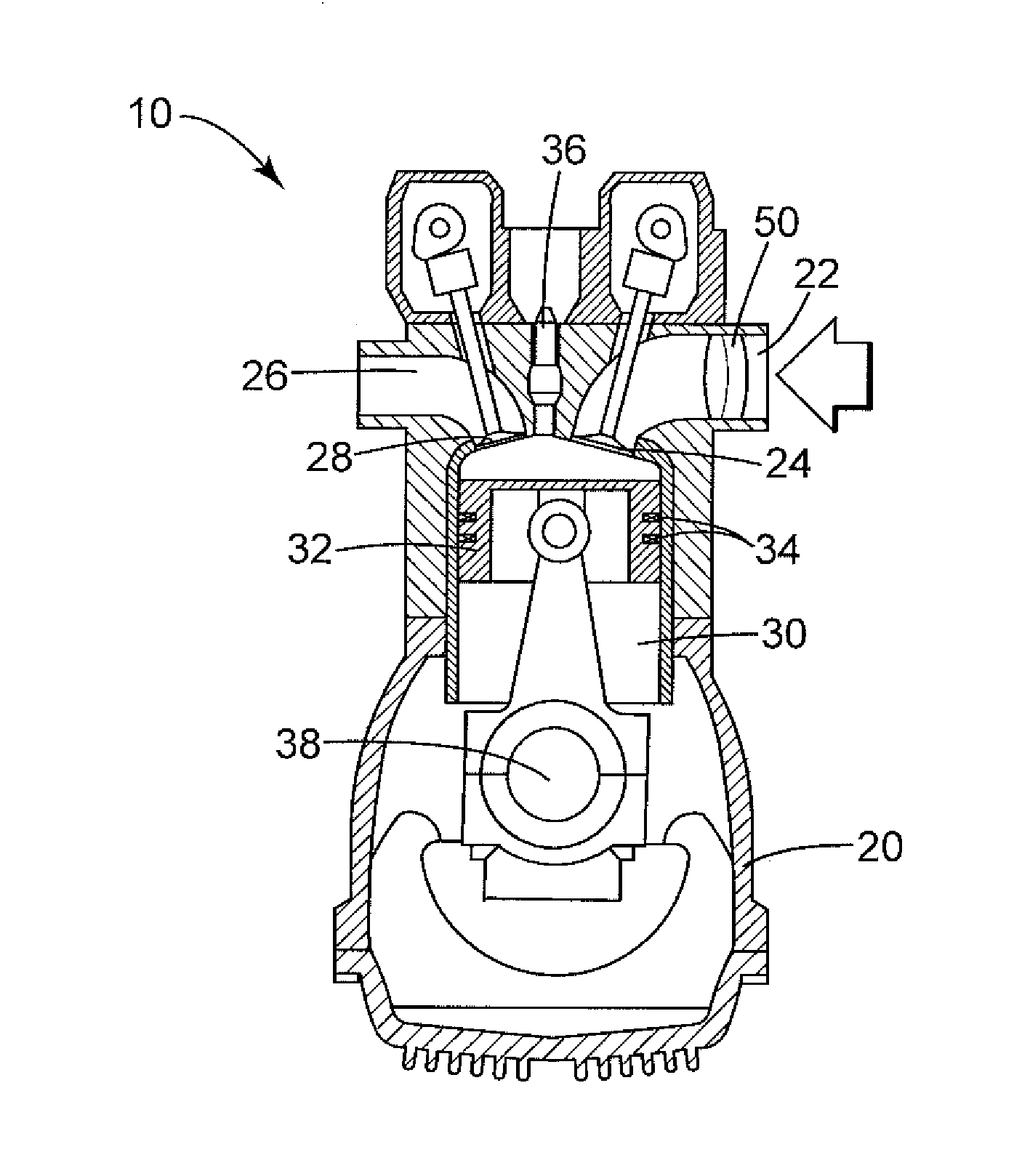Apparatus and method for oxy-combustion of fuels in internal combustion engines
a technology of internal combustion engine and combustion chamber, which is applied in the direction of combustion-air/fuel-air treatment, machines/engines, energy input, etc., can solve the problems of air pollution management from mobile sources, space and weight limitations, and the economy of scale, so as to achieve the effect of optimizing performan
- Summary
- Abstract
- Description
- Claims
- Application Information
AI Technical Summary
Benefits of technology
Problems solved by technology
Method used
Image
Examples
Embodiment Construction
[0054]Referring now to the simplified illustration in FIG. 3 of a cross-section view of a portion of an ICE 10 representative of a four-stroke cycle. The engine block 20 includes an intake manifold 22 the flow of air being controlled by intake valve 24 and an exhaust manifold 26 closed by exhaust valve 28. Cylinder 30 contains piston 32 which is fitted with one or more piston rings 34.
[0055]In accordance with conventional four-stroke engine operations, the intake down stroke commences with the closing of the exhaust valve 28 and the opening of the intake valve 24 that is coordinated with the down stroke of piston 32 which draws the mixture of air and fuel into the open portion of cylinder 30 from the intake manifold 22. During the compression stroke, both valves 24 and 28 are closed and the fuel / air mixture is compressed as the piston 32 moves to the top of the cylinder, the spark plug or other ignition device 36 ignites the fuel / air mixture and a controlled combustion occurs which ...
PUM
| Property | Measurement | Unit |
|---|---|---|
| temperature | aaaaa | aaaaa |
| temperatures | aaaaa | aaaaa |
| operating temperature | aaaaa | aaaaa |
Abstract
Description
Claims
Application Information
 Login to View More
Login to View More - R&D
- Intellectual Property
- Life Sciences
- Materials
- Tech Scout
- Unparalleled Data Quality
- Higher Quality Content
- 60% Fewer Hallucinations
Browse by: Latest US Patents, China's latest patents, Technical Efficacy Thesaurus, Application Domain, Technology Topic, Popular Technical Reports.
© 2025 PatSnap. All rights reserved.Legal|Privacy policy|Modern Slavery Act Transparency Statement|Sitemap|About US| Contact US: help@patsnap.com



